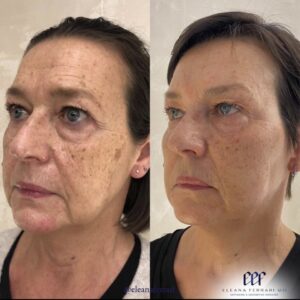Pigmented senile and solar lesions are skin spots that originate with the passage of age, especially on the lesions of the body most exposed to sunlight. Do you need a skin spot or tattoo removal? Read more.
Other skin spots, on the other hand, have a different origin and can also be present at birth or appear following pregnancy. Q-Swithced laser technology is capable of generating very short duration pulsed laser emissions that selectively interact with skin blemishes, removing them in order to offer fast and effective results.
The Q-Switched laser technology, thanks to very short duration pulses that selectively interact with the skin, offers effective and fast spot removal results. Treatment is selective for melanin. This skin pigment is capable of depositing itself in different ways, giving rise to different spots.
The Q-Switched laser beam allows to destroy the pigment selectively, without damaging any surrounding structures. Q-Switched laser technology is able to treat dark and in some cases even colored tattoos. The number of sessions can be up to a maximum of 6 and depends on the desired degree of lightening, the extension and the type of pigment.
Are you courious to see the results? Check it out on my social pages.










